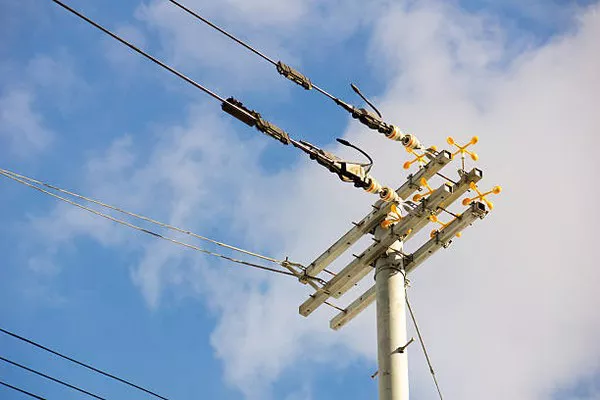In the realm of electrical engineering and power distribution, transformers play a critical role in the efficient transmission and distribution of electrical energy. Among various types of transformers, oil-immersed transformers are particularly significant due to their widespread use and specific advantages. This article delves into the intricacies of oil-immersed transformers, elucidating their construction, operation, benefits, and applications, while also addressing maintenance practices and safety considerations.
What is an Oil-Immersed Transformer?
An oil-immersed transformer, as the name suggests, is a type of transformer in which the core and windings are submerged in insulating oil. This oil acts as both a coolant and an insulator, helping to dissipate the heat generated during operation and providing electrical insulation to prevent short circuits and electrical arcing.
Construction of Oil-Immersed Transformers
The fundamental components of an oil-immersed transformer include the core, windings, tank, and oil. Here is a detailed look at each:
Core: The core is typically made of laminated silicon steel sheets, which are stacked together to form a magnetic circuit. This design minimizes energy losses due to eddy currents and hysteresis.
Windings: Copper or aluminum conductors are wound around the core to form the primary and secondary windings. These windings are insulated to prevent electrical contact between different turns and layers.
Tank: The tank houses the core and windings, filled with insulating oil. It is usually made of robust steel to withstand internal pressures and external environmental conditions.
Insulating Oil: The oil serves a dual purpose. It acts as a coolant to dissipate heat and as an insulator to prevent electrical discharge. Commonly used oils include mineral oils, although synthetic and biodegradable oils are also employed in specific applications.
Operation of Oil-Immersed Transformers
The operation of an oil-immersed transformer is based on the principles of electromagnetic induction. When an alternating current (AC) flows through the primary winding, it creates a time-varying magnetic field in the core. This magnetic field induces a voltage in the secondary winding, transferring electrical energy from the primary to the secondary side.
The insulating oil circulates through the transformer, absorbing heat generated by the core and windings. This heat is then dissipated through the walls of the tank or via external radiators, maintaining the transformer at an optimal operating temperature.
Advantages of Oil-Immersed Transformers
Oil-immersed transformers offer several advantages, making them a preferred choice in many applications:
Efficient Cooling: The use of oil as a coolant enhances heat dissipation, allowing the transformer to operate at higher loads without overheating.
Superior Insulation: The insulating properties of the oil provide robust electrical insulation, reducing the risk of short circuits and improving operational safety.
Durability: Oil-immersed transformers are known for their durability and long service life, often exceeding several decades with proper maintenance.
Higher Power Handling Capacity: Due to effective cooling and insulation, oil-immersed transformers can handle higher power loads compared to dry-type transformers.
Cost-Effectiveness: These transformers are often more cost-effective in terms of initial investment and maintenance, especially for high voltage and high power applications.
Applications of Oil-Immersed Transformers
Oil-immersed transformers are utilized across various sectors due to their reliability and efficiency. Some common applications include:
Power Generation Plants: Used for stepping up the voltage from generators for efficient transmission over long distances.
Substations: Employed in electrical substations for stepping down high transmission voltages to distribution levels.
Industrial Applications: Powering heavy machinery and equipment in industrial settings that require stable and reliable power supply.
Commercial Buildings: Ensuring a steady and safe electrical supply for large commercial complexes and high-rise buildings.
Renewable Energy Systems: Integral to the integration of renewable energy sources like wind and solar power into the grid.
Maintenance of Oil-Immersed Transformers
Regular maintenance is crucial for the optimal performance and longevity of oil-immersed transformers. Key maintenance practices include:
Oil Testing and Replacement: Regular testing of the insulating oil for moisture content, dielectric strength, and the presence of dissolved gases is essential. Contaminated oil should be filtered or replaced to maintain its insulating properties.
Visual Inspections: Periodic visual inspections of the transformer and its components for signs of leaks, corrosion, or physical damage can prevent potential failures.
Temperature Monitoring: Continuous monitoring of operating temperatures helps in identifying overheating issues, allowing for timely intervention.
Electrical Testing: Conducting electrical tests such as insulation resistance tests, transformer turns ratio (TTR) tests, and power factor tests helps in assessing the health of the windings and core.
Buchholz Relay Maintenance: In transformers equipped with a Buchholz relay, regular checks and testing of this gas-operated relay are necessary to detect and address internal faults promptly.
Safety Considerations
While oil-immersed transformers are generally safe and reliable, certain safety measures should be adhered to:
Fire Safety: Although insulating oil is not highly flammable, it can catch fire under certain conditions. Fire safety measures, such as installing fire barriers and automatic fire suppression systems, are critical in high-risk areas.
Leak Prevention: Ensuring the integrity of the tank and seals to prevent oil leaks, which can lead to electrical faults and environmental contamination.
Proper Grounding: Effective grounding of the transformer and associated equipment is vital to ensure safety and prevent electrical shock hazards.
Regular Training: Ensuring that personnel involved in the operation and maintenance of transformers are adequately trained in safety protocols and emergency procedures.
See Also Why Is Transformer Rating In Kva
Conclusion
Oil-immersed transformers are a cornerstone of modern electrical power systems, offering unmatched reliability, efficiency, and durability. Their ability to handle high power loads and provide superior insulation makes them indispensable in power generation, transmission, and distribution networks. By adhering to rigorous maintenance practices and safety protocols, the operational lifespan and safety of these transformers can be maximized, ensuring a stable and efficient power supply for various applications. As technology advances, the evolution of oil-immersed transformers continues to play a crucial role in meeting the growing demand for electricity across the globe.

